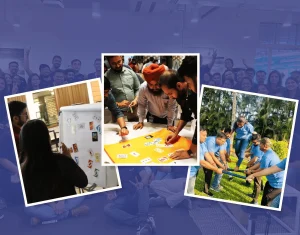Training plans are pivotal for the growth and development of individuals within an organization. However, with proper planning, training initiatives can stay within their intended impact. To ensure maximum effectiveness, creating a well-structured training plan is crucial. We will explore three key ways to plan training for maximum impact. These strategies will help organizations design training programs that align with their objectives, enhance learning outcomes, and drive positive change. Whether implementing training for new employees, upskilling existing staff, or investing in professional development, these tips will empower you to create a comprehensive training plan that delivers tangible results. Let’s delve into the fundamental approaches to maximize the impact of your training efforts and unlock the full potential of your team.
How Do You Build Training To Impact Your Learners?
Building training programs that significantly impact learners requires careful planning and execution. Employee training services can play a vital role by providing expertise and resources. One key approach is conducting a needs assessment to identify skill gaps, knowledge deficiencies, and performance areas that need improvement. With this information, the training program can be customized to address the specific needs of the learners. Customization ensures that the training content, delivery methods, and activities are tailored to the participants, increasing their engagement and relevance.
Additionally, employee training services can employ interactive and engaging instructional strategies, such as simulations, case studies, and hands-on exercises, to enhance learning retention and application. These services can also leverage technology platforms to deliver training in a flexible and accessible manner, allowing learners to access materials and resources at their own pace and convenience. Organizations can build training programs that maximize learner impact, enhance skills and knowledge, and drive performance improvement by collaborating with employee training services.
Understand What Skills You Are Impacting And Why
To plan training for maximum impact, it is essential to understand the skills that will be impacted and the reasons behind their importance. Take the time to identify the specific skills or competencies that the training program aims to develop or enhance. This could include technical skills, leadership abilities, communication proficiency, problem-solving capabilities, or any other relevant skill set.
Understanding the skills being targeted enables you to tailor the training content and activities accordingly. It ensures the program addresses specific gaps or needs within the team or organization. By aligning the training with the desired skills, you increase the chances of participants being able to apply their newly acquired knowledge and abilities effectively.
Furthermore, it is crucial to comprehend why these skills are essential for individual and organizational success. Consider these skills’ impact on job performance, team dynamics, customer satisfaction, or overall business goals. This understanding provides a compelling rationale for investing in training and helps participants see the relevance and value of the learning experience.
Understand How People Learn
Each individual has unique learning preferences and styles, and tailoring the training approach to accommodate these differences can greatly enhance the effectiveness of the learning experience.
When designing training, it is important to consider various learning theories and models that provide insights into how people process and retain information. Some popular theories include behaviorism, cognitivism, constructivism, and social learning theory. These theories highlight the importance of engagement, active participation, relevance, and feedback in promoting effective learning.
To understand how people learn, consider conducting a needs assessment or survey to gather information about the learners’ backgrounds, prior knowledge, and preferred learning styles. This data can help you design training activities and materials that cater to different learning preferences, such as visual, auditory, or kinesthetic.
Frequently Asked Questions
Q.1 How can a corporate training company benefit my organization?
Corporate training is an essential aspect of any organization’s growth and development. It helps employees acquire new skills, enhances their performance, and boosts productivity. The benefits of partnering with a corporate training company are numerous. Firstly, they bring expertise and experience in designing and delivering effective training programs that align with your organizational goals.
Q.2 How can a team building organizer help improve workplace morale and productivity?
A team-building organizer can help companies create engaging and fun activities that promote teamwork, communication, and problem-solving skills. Employees can build stronger relationships with their colleagues by participating in these activities, leading to better collaboration and increased motivation. Moreover, team-building activities provide a break from the daily work routine, allowing employees to recharge their batteries and return to work feeling refreshed and energized.
Q.3 What are the key factors to consider when planning employee training?
One key factor is identifying the specific needs of your employees and aligning them with your business objectives. This involves thoroughly analyzing the skills required for each role and identifying areas where additional training is needed. Another critical factor is selecting the appropriate training methods that suit your organization’s culture, budget, and goals.





































